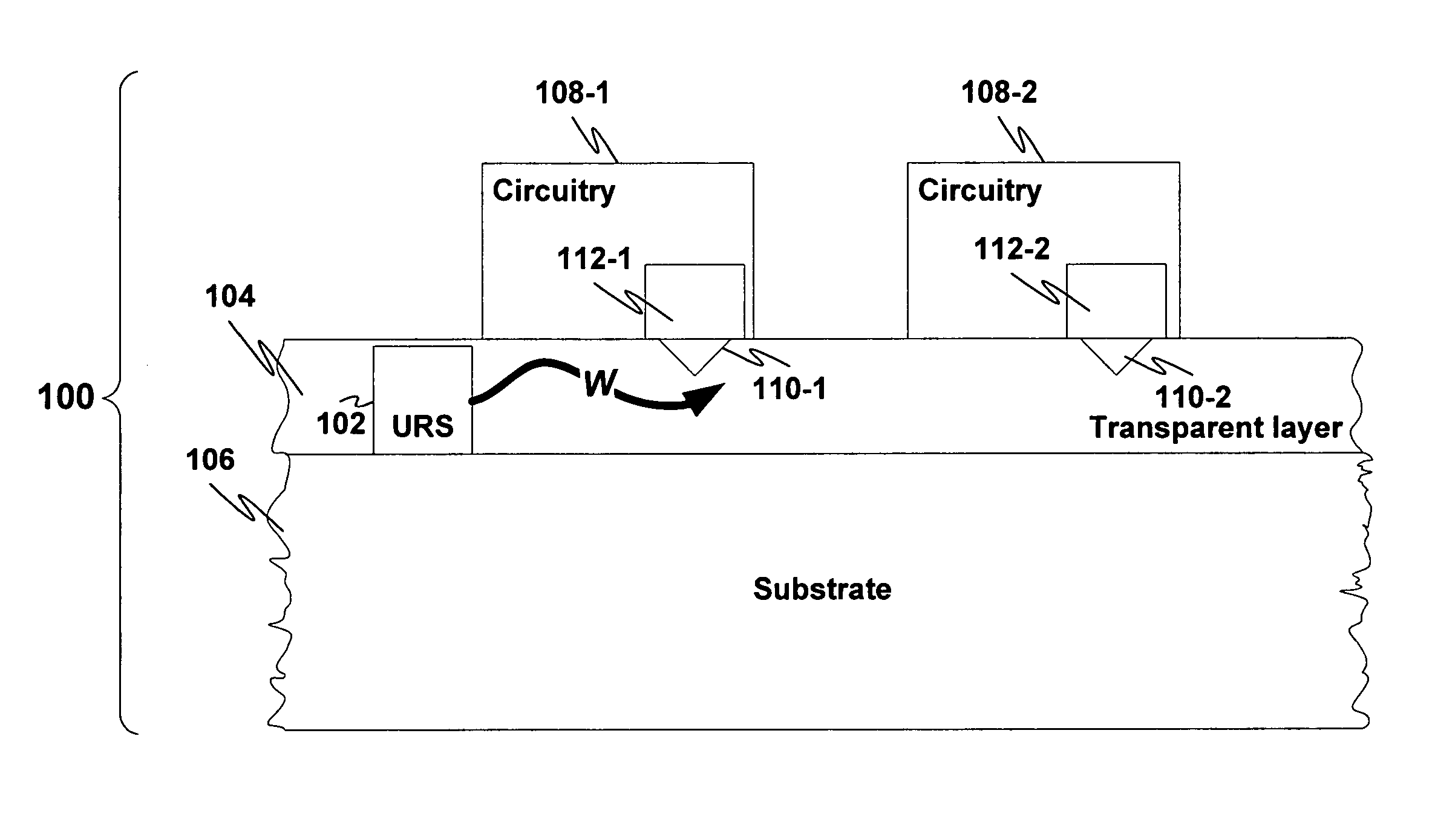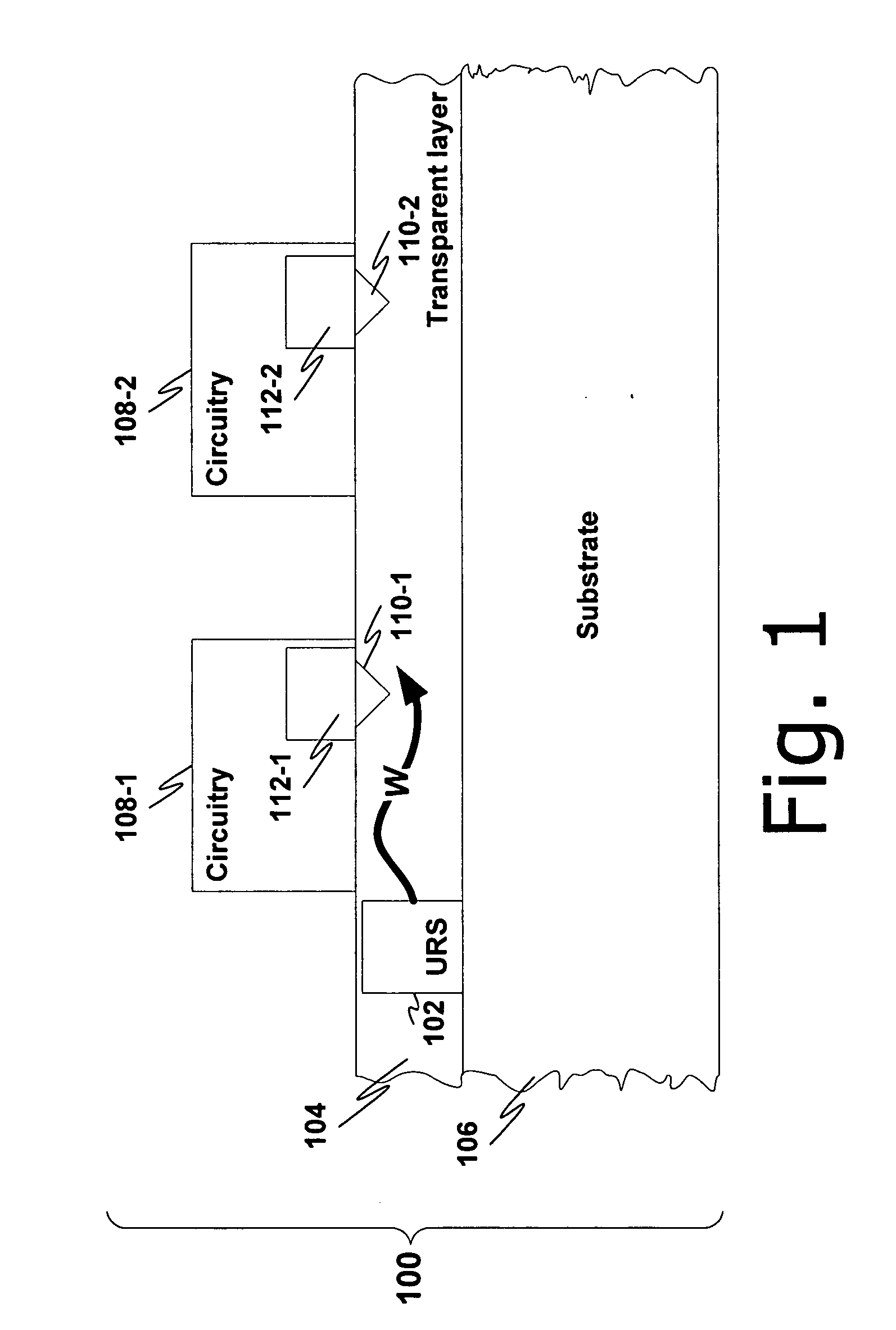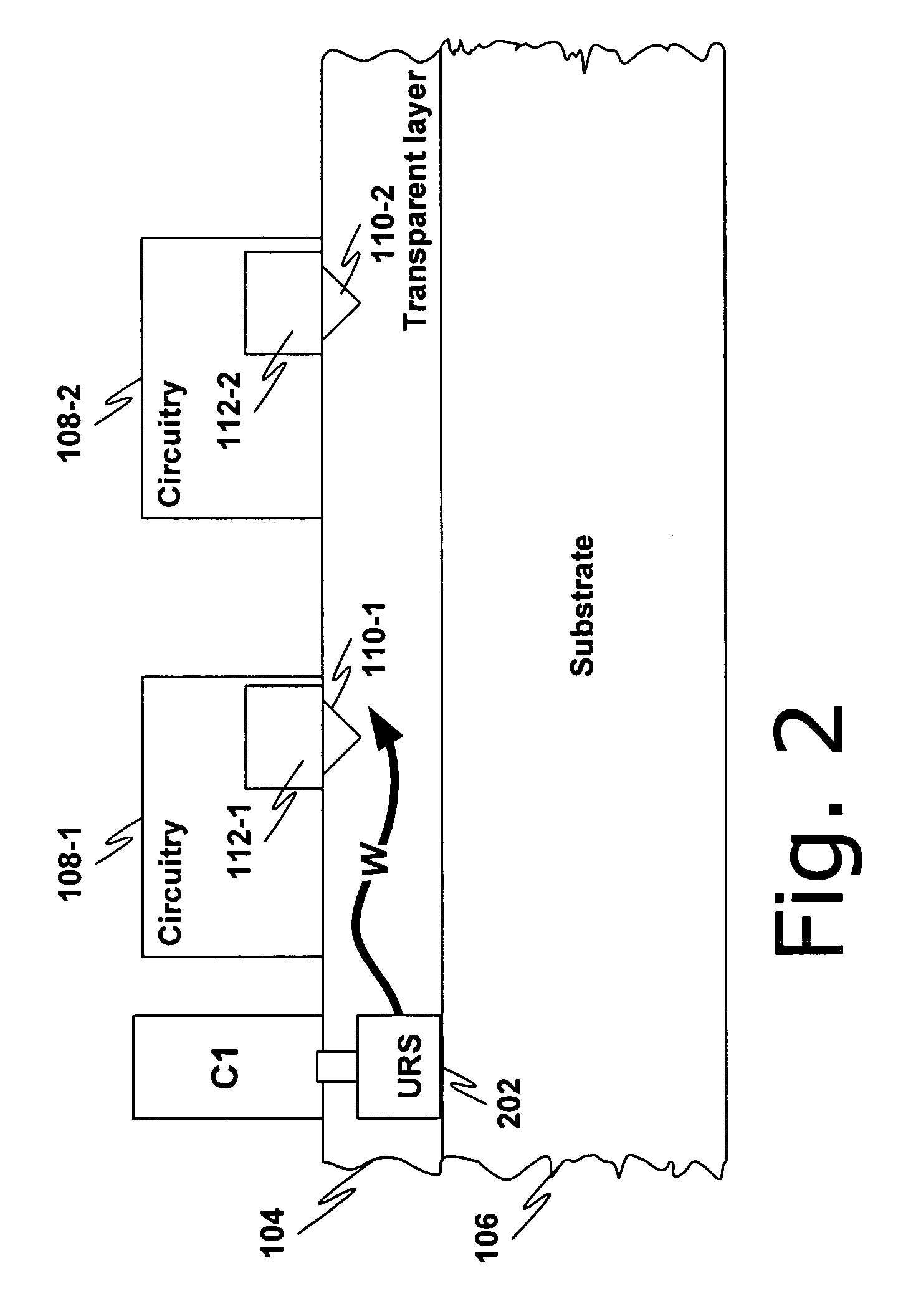Coupling electromagnetic wave through microcircuit
a micro-circuit and electromagnetic wave technology, applied in the field of coupling signals, can solve the problems of loss of synchronization, micro-circuit cannot function correctly, and the device speed is generally limited,
- Summary
- Abstract
- Description
- Claims
- Application Information
AI Technical Summary
Problems solved by technology
Method used
Image
Examples
Embodiment Construction
[0021]FIG. 1 is a side view of a device 100 in which an ultra-small resonant structure 102 is formed within a non-conductive waveguide layer 104 on a substrate 106.
[0022] In general, the ultra-small resonant structure is one which emits electromagnetic radiation (EMR) when exposed to a beam of charged particles. The structure 102 may be, e.g., one or more of the resonant structures described in one or more of the related applications, each of which is described in greater detail above: U.S. application Ser. Nos. 11 / 243,476; 11 / 243,477; 11 / 238,991; 11 / 302,471; 11 / 325,432; 11 / 325,448; 11 / 325,571; and 11 / 325,534. In particular, the structure 102 may be one which emits light at a particular wavelength, e.g., visible light. Thus, the ultra-small resonant structure 102 emits an EMR wave (denoted W) in the waveguide layer 104. The wave W may be modulated or otherwise manipulated to carry a data signal such as, e.g., a clock signal.
[0023] The waveguide layer 104 is preferably transparent ...
PUM
 Login to View More
Login to View More Abstract
Description
Claims
Application Information
 Login to View More
Login to View More - R&D
- Intellectual Property
- Life Sciences
- Materials
- Tech Scout
- Unparalleled Data Quality
- Higher Quality Content
- 60% Fewer Hallucinations
Browse by: Latest US Patents, China's latest patents, Technical Efficacy Thesaurus, Application Domain, Technology Topic, Popular Technical Reports.
© 2025 PatSnap. All rights reserved.Legal|Privacy policy|Modern Slavery Act Transparency Statement|Sitemap|About US| Contact US: help@patsnap.com



